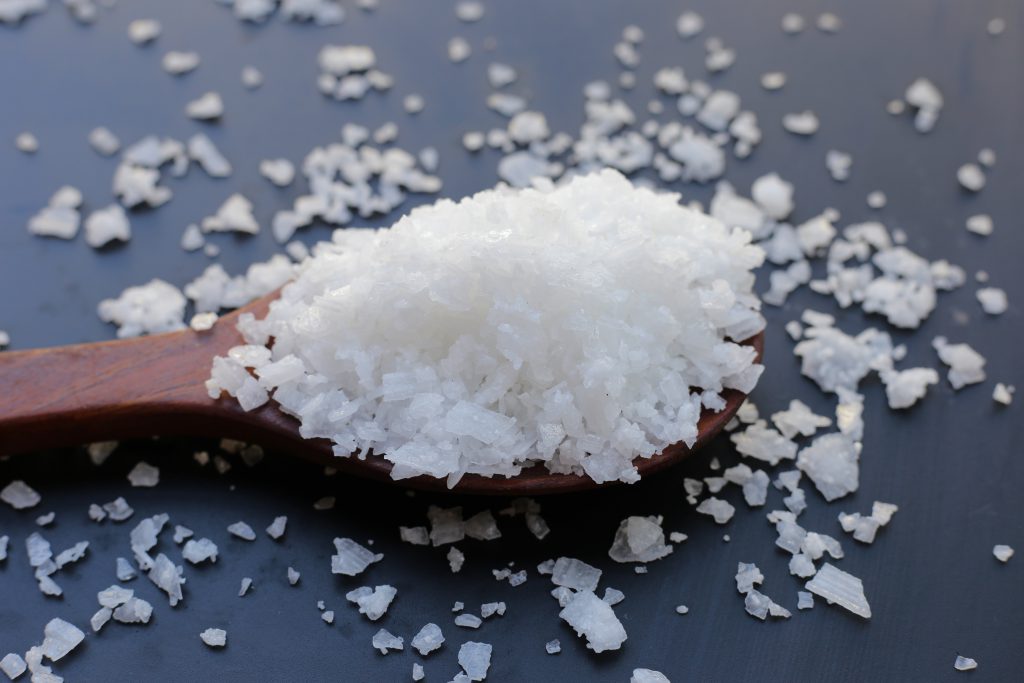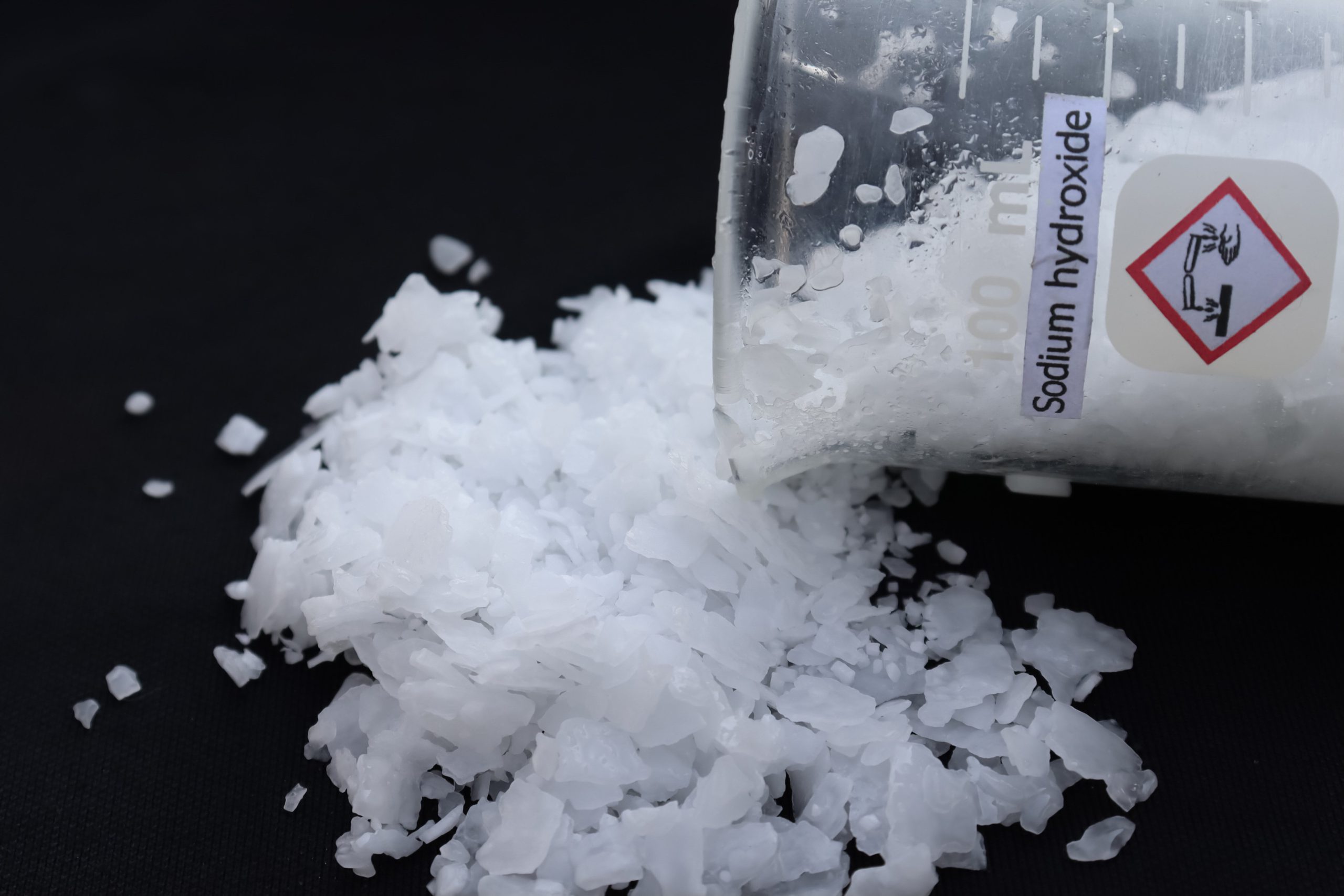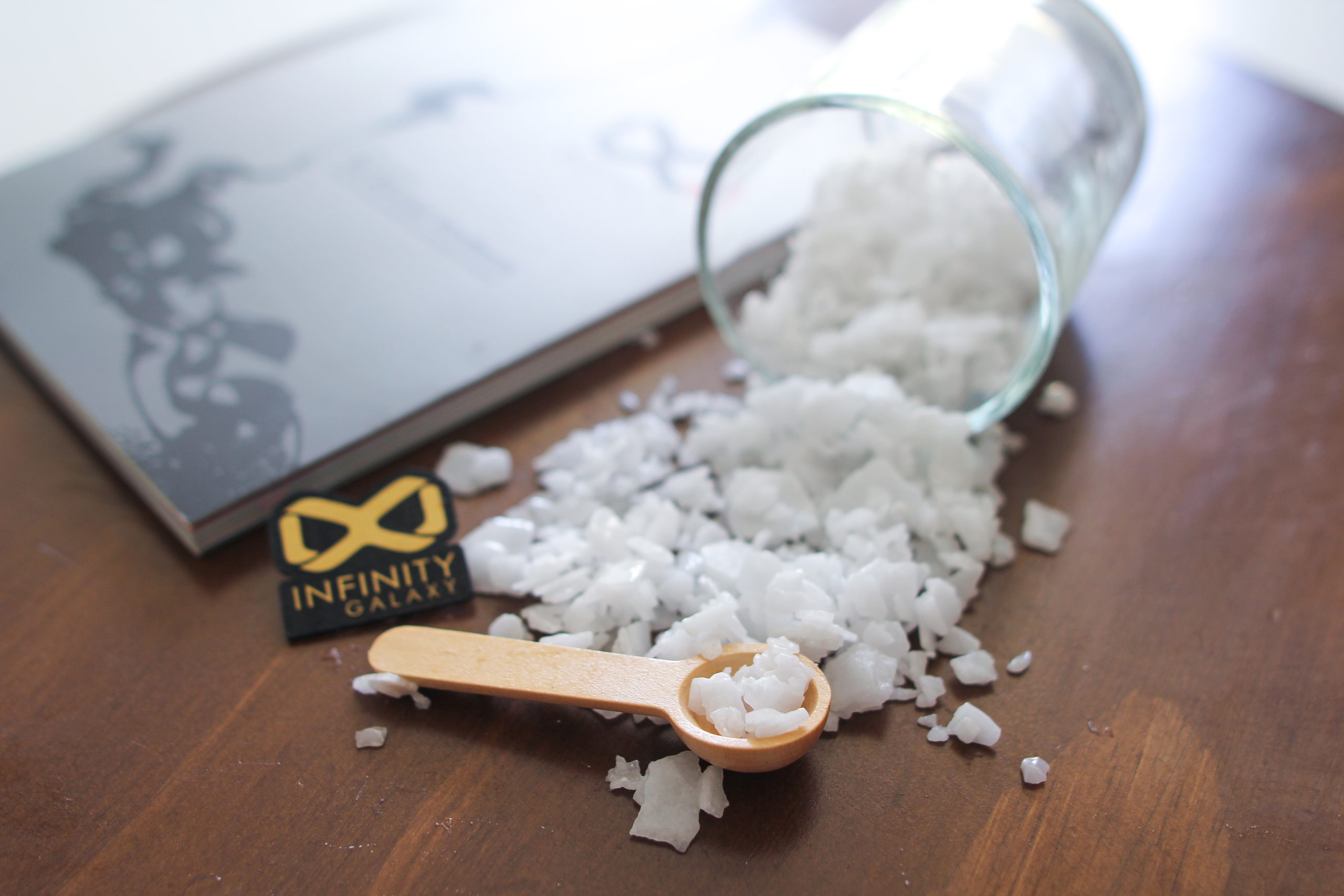Caustic soda, or sodium hydroxide, is a chemical compound with a wide range of applications, from household cleaning agents to industrial processes.
Caustic soda has different names, types, properties, uses, and production processes.
Keep reading this article to find answers to all of your questions about caustic soda.
What is Caustic Soda or Sodium Hydroxide?
Caustic soda is a highly alkaline substance that has strong reactivity when dissolved in water. It is commonly used in various industrial processes, such as paper production, cleaning agents, and water treatment.
Caustic soda formula is NaOH, it has a corrosive nature and the ability to cause severe burns if not handled properly.
It is white, odorless, bitter, and soluble in water. In addition, It feels slippery when touched with bare hands.
What are the Other Names of Caustic Soda?
Caustic soda is a term mostly used by traders because of its corrosive and caustic features. Sodium hydroxide is the chemical name of caustic soda and has been derived from its chemical structure.
This product is also known as lye or soda because of its strong alkaline nature. However, liquid caustic soda is more popular with this name.
Caustic Soda Types and Grades
Caustic soda has three different shapes:
- Caustic soda pearls (granulated caustic soda)
Caustic soda pearls are spherical shaped. They are also named as soda grain and granulated caustic soda. The highest demand is in paper manufacturing where it is utilized in pulping and bleaching processes.
- Caustic soda flakes
Caustic soda flakes or pellets are white, flat and small pieces with a narrow thickness, compared to their surface dimensions. Generally, solid types of caustic soda are more commonly used because they are easier to measure, transport, and store.
- Caustic soda liquid (Lye)
Caustic soda liquid, or lye, is clear like water but has more viscosity. It could be made in different concentrations by evaporating water or by adding more water to a concentrated solution. It’s very dangerous and should be stored and handled carefully.
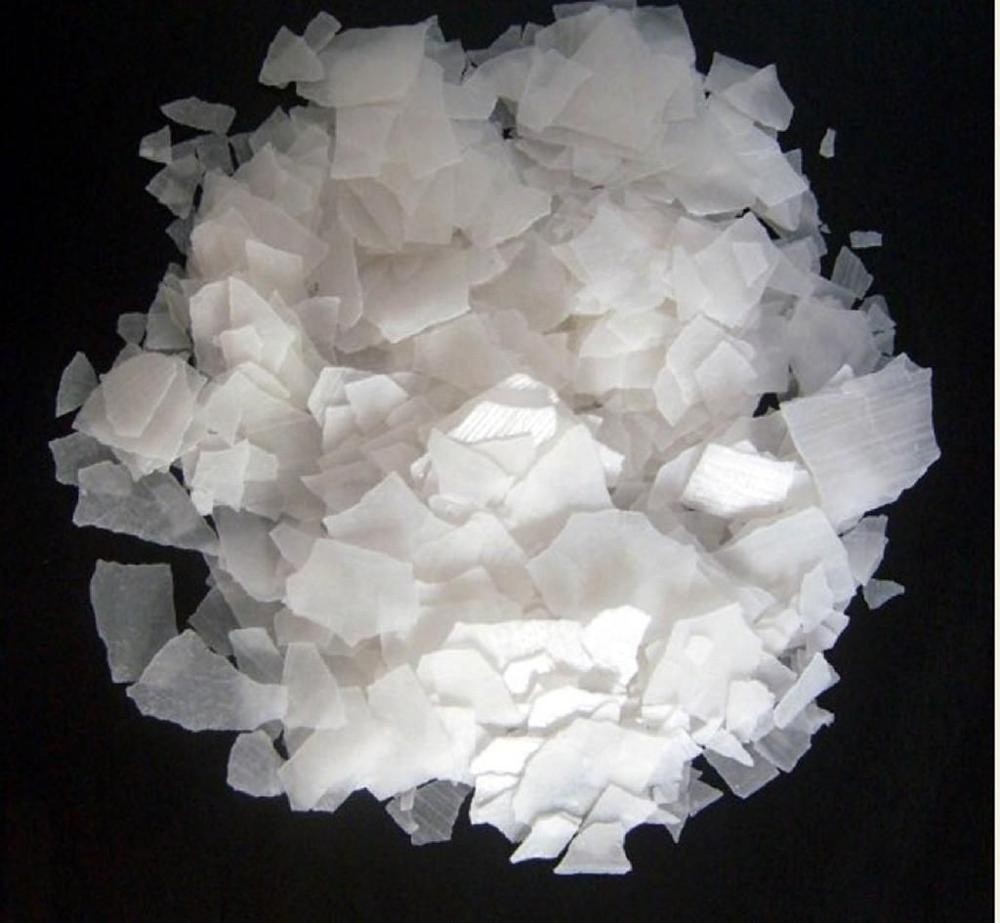
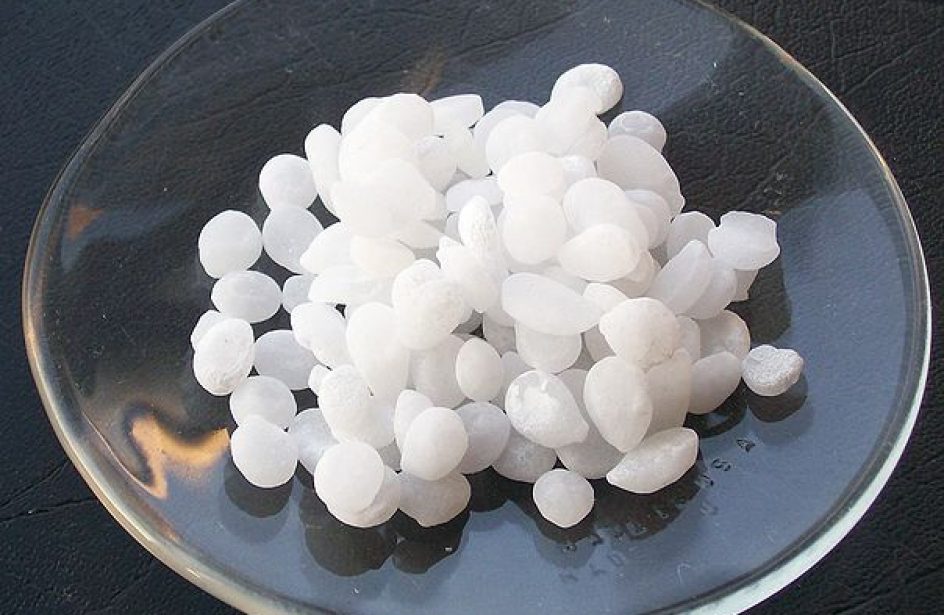
Read caustic soda types and grades article for more details about the uses and properties of different caustic soda types.
How Caustic Soda is made?
Electrolysis is the main method to produce caustic soda. To manufacture caustic soda in this way, electricity, anodes, cathodes, and a special cell are used to break down salt water into sodium hydroxide and other substances.
Producing caustic soda by electrolysis can be performed in three different cells:
- Mercury Cell Process
- Diaphragm Cell Process
- Membrane Cell Process
If you are interested in learning details about manufacturing caustic soda, read the caustic soda production processes article.
Caustic Soda Properties
Caustic soda properties are divided into two categories:
- Physical Properties
The physical properties of caustic soda are its color, state, melting point, solubility, density, etc. Sodium hydroxide is a white solid at room temperature. It’s soluble in water, forming a strong alkaline solution.
- Chemical Properties
Caustic soda reactivity and corrosiveness are the chemical properties of caustic soda. It’s a highly reactive substance and participates in many reactions, including reactions with metals, acid oxides, and precipitation.
Read more about caustic soda properties in the caustic soda physical and chemical properties article.
Caustic Soda Applications
Caustic soda has many important uses that will be briefly explained in this section:
- Chemical Manufacturing
It is used as a raw material or pH controller in various chemical processes, including detergents, soaps, dyes, food processing, and pharmaceuticals.
- Pulp and Paper Industry
It helps to separate cellulose fibers from wood and bleach the pulp to achieve the desired brightness and quality of paper products.
- Water Treatment
Caustic soda adjusts pH levels, neutralizes acidity, and removes contaminants such as heavy metals and organic pollutants from water.
- Alumina Production
Caustic soda helps extract alumina from bauxite ore.
- Textile Industry
Caustic soda makes cotton fibers stronger, more shiny, and better at getting dye.
- Petroleum Industry
Caustic soda is involved in various processes within the petroleum industry, including refining, drilling, and petrochemical production.
- Cleaning Agent
Caustic soda dissolves oils, fats, and greasy residues from surfaces. It is also used as a drain pipe opener.
- Agriculture
Controlling pH, cleaning and sanitizing, making pesticides, and animal feed processing are all important uses for caustic soda in agriculture.
Read a full article about different uses of sodium hydroxide on caustic soda applications.
Caustic Soda Tests
Caustic soda specifications are determined by performing the caustic soda tests. These tests allow us to measure the purity level of the caustic soda. The following are the most important caustic soda tests:
- Sodium Hydroxide Content
- Carbonate Content
- Sulfate Content
- Iron Content
- Salt Content
Caustic Soda Storage and Handling
Caustic soda is a hazardous material, so it should be stored in a cool and dry place with a good ventilation system. Keep caustic soda away from sunlight, moisture, and reactive materials such as acids.
When working with caustic soda, wearing special glasses, masks, and gloves is necessary to protect ourselves from caustic soda dust and possible lye splashes.
If caustic soda lye contacts the eyes or skin, wash them quickly with plenty of water and get medical help.
Get more safety advice and learn about storing caustic soda in a caustic soda storage tank, handling, container and safety article.
We would be glad to hear your thoughts! Feel free to share your comments or reach out to us on WhatsApp for any further questions or inquiries about caustic soda.




